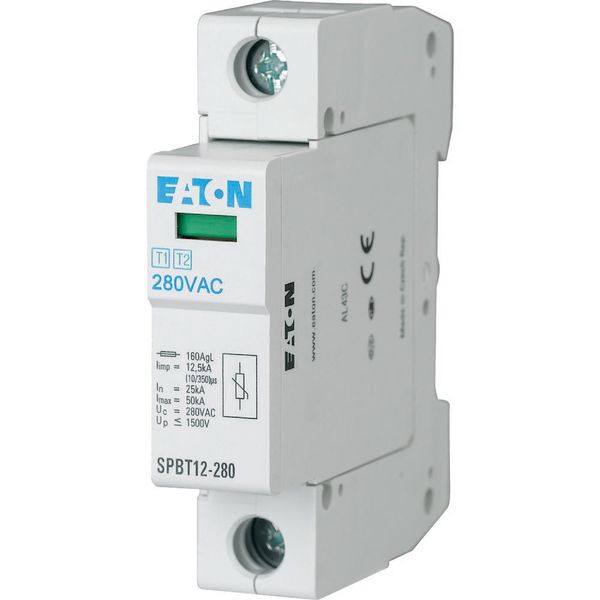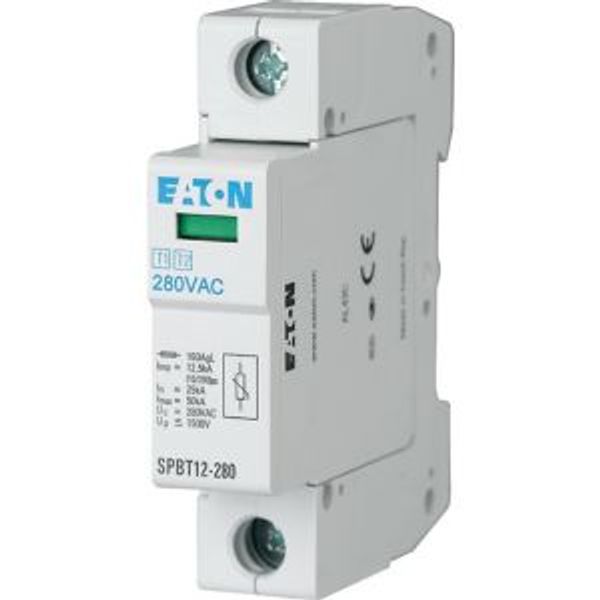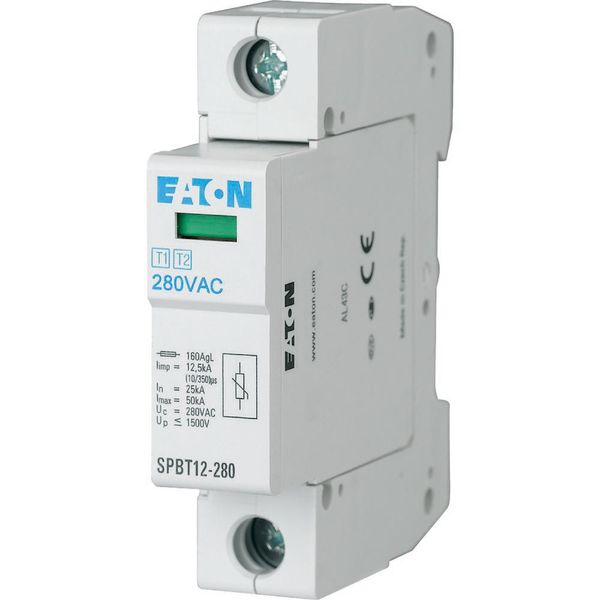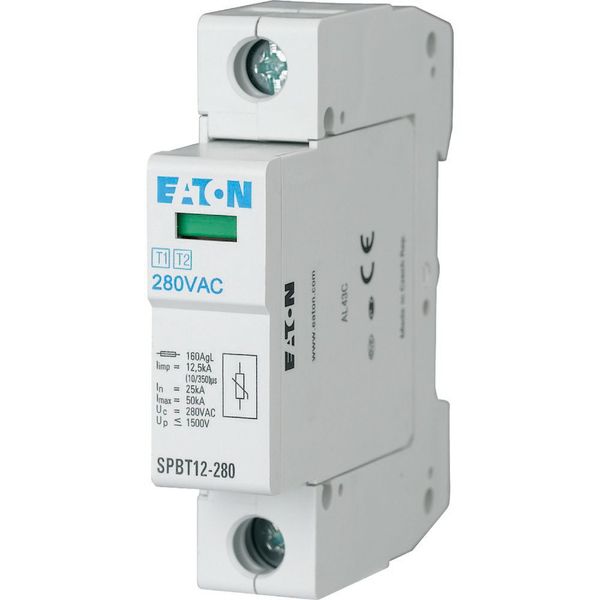Register to unlock your exclusive B2B prices and start shopping. Sign up now!
SPBT12-280/1 Lightning current and surge arresters, 12, 5 kA, L-(SU) N
In stock
In vendor's stock
Price (excl. VAT):
42,34 €
EAN: 4015081548842
MPN: 158306
Package: 1
Box: 12
Estimate delivery time at our warehouse (approx.):
4-6 weeks
Technical Information
| Item condition | New |
| Manufacture name | SPBT12-280/1 Lightning current and surge arresters, 12, 5 kA, L-(SU) N |
| Brand | EATON |
| Categories |
Surge Protection Devices (SPD)
|
| Country of origin* | RO |
| * The actual country of origin may differ depending on the delivery batch. To confirm the specific country of origin, please contact your account manager. | |
| Harmonized System Code | 8536 5080 00 |
| Lightning impulse current (10/350 µs) | 12.5 kA |
| Voltage protection level | 1.5 kV |
| Max. continuous voltage AC | 280 V |
| Nominal voltage AC | 280 V |
| Nominal voltage DC | 0 V |
| Test class | Type 1 + 2 |
| Voltage protection level L-N | 0 kV |
| Max. continuous voltage DC | 0 V |
| Degree of protection (IP) | IP20 |
| Max. PV-voltage | 0 V |
| Voltage protection level N-PE | 0 kV |
| Voltage protection level L-PE | 1.5 kV |
Packing details
| Packing level 1 | 4015081548842 |
| Packing level 2 | 9008790412608 |
| Packing level 3 | 9008790412615 |
Other Technical data
| Mounting method | DIN rail (top hat rail) 35 mm |
| Number of poles | 1 |
| Construction size | 1 modular spacing |
| Remote signalling | No |
| Follow current extinguishing capability | 0 kA |
| Signalling at the device | Optic |
| Integrated backup fuse | No |
| Max. conductor cross section solid (solid, stranded) | 25 mm² |
| Max. conductor cross section flexible (fine-strand) | 35 mm² |
| Voltage protection level (DC+ - DC-) | 0 kV |
| Voltage protection level (DC+/DC- - PE) | 0 kV |
| Specific energy (W/R) | 39.1 kJ/Ohm |
| Energy-coordinated protection effect with regard to the terminal equipment | No |
| System configuration DC | No |
| System configuration IT | No |
| System configuration TN | Yes |
| System configuration TN-C | No |
| System configuration TN-S | Yes |
| System configuration TT | No |
| System configuration other | Yes |
| System configuration TN-C-S | No |
| Max. overcurrent protection device, parallel connection (fuse) | 0 A |
| Max. overcurrent protection device, series connection (fuse) | 160 A |
| Voltage switching spark gap technology | No |
| Overcurrent protected voltage tapping | No |
Description
This component functions as a precise interface element in control systems, facilitating accurate input and interaction for data entry or adjustment. It is designed to handle consistent mechanical activation and provide reliable electrical signaling within its operational ranges.
**Mechanical Properties**
Constructed with durable materials suited for industrial environments—features ensure long lifecycle under regular usage. Dimensions are compact, optimized for panel mounting without excess bulk.
**Electrical Specifications**
Rated for low-voltage applications; typical signal transmission maintained through stable contact points. Designed with resistance to interference to ensure accurate data communication.
- Electrical rating: Limited to specific low voltage thresholds (check datasheet).
- Requires proper environmental sealing when used in outdoor or dusty settings.
- Panel cutout dimensions must match specified tolerances exactly—variation leads to improper fitting.
- Not compatible with high-frequency systems—may cause signal degradation above threshold limits.












